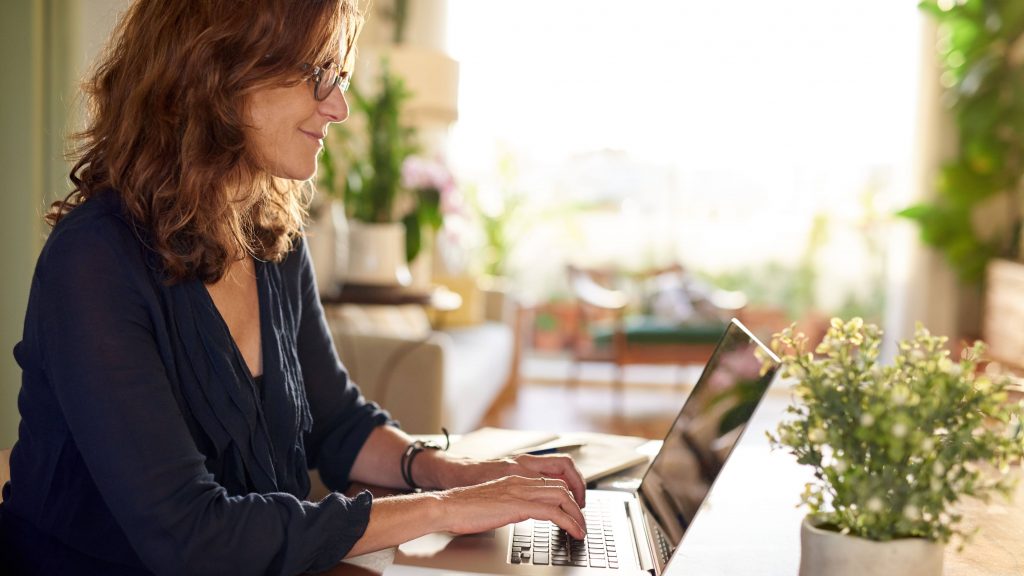-
Mayo Clinic Q and A: Staying active while working from home

DEAR MAYO CLINIC: I have been working from home for months now. I want to start being more active, especially because my work often requires that I sit at my desk for long periods of time. Are there any easy ways for me to add fitness into my home routine?
ANSWER: Sitting at a desk all day can be harder than it sounds. Sitting in one position for a long period of time puts a lot of strain on the body, and can leave you feeling stiff, sore and tired.
An easy way to break this cycle is by getting up to move every half-hour or so. This could mean simply standing up and walking to the kitchen for a drink of water. Or if you have stairs in the home, walk up and down a few times to get some movement.
You also can stand and perform stretches while on a Zoom call. If you aren't required to be on video all the time, consider donning a pair of headphones and walking around your home as you listen to a conference call.
A small amount of movement and stretching throughout the day can help you stay alert and focused. Consider these basic stretches that can be performed as often or as little as you want from the comfort of your home-based work area:
- Neck stretches
For neck stretches, bring your chin to your chest and hold for 15 to 30 seconds. Rotate your head to the left and then to the right, holding 15 to 30 seconds on each side. Lastly, tilt your head to the side, leaning your ear toward your shoulder ― again for 15 to 30 seconds on each side. - Standing stretches
While standing, put a hand on a nearby desk or chair to stabilize yourself. Bend one leg, grab your ankle and pull it toward your buttock. Hold this position for 15 to 30 seconds and then repeat on the other side. Next stand with feet hip-width apart and arms crossed across your chest. Twist to the left and then to the right, holding for 30 seconds on each side. - Seated stretches
While seated, bring one of your knees toward your chest. Use your hands to grab the back of your thigh and pull it toward you. Keep your back straight, being careful not to lean forward. Hold this stretch for 30 seconds. Relax, return to the starting position and repeat the stretch on the other leg. - Forearm stretches
Lift one of your arms and hold it in front of you, with your palm facing down. Bend your hand downward, and gently pull it toward you using your other hand. Repeat using your other arm.
As you look to add more activity, be creative. Being active at home does not require you to invest in large pieces of exercise equipment. Consider these five inexpensive home fitness equipment items:
- Jump-rope
Jumping rope gets your heart pumping and offers a great cardio workout. Exercising with a jump-rope requires little space, and it can be performed by people at any fitness level. - Yoga mat
A yoga mat is good for more than just yoga. Mats can protect your back and joints from hard surfaces during your workout. A variety of different buttock and core workouts, as well as stretching, can be done using a mat. - Free weights or dumbbells
For added strength, free weights can be a plus. Select a variety of sizes ― from 2 pounds to 20 pounds ― that allow you to work your way up for a challenge. Depending on the style, these weights or dumbbells could be stored under a bed or in a closet. Kettlebells also are becoming popular. Grab one and curl your way through a commercial break if you are watching TV, or use them in the morning to help wake you up. - Resistance bands
Using resistance bands can improve your strength and muscle tone. These bands are available in various sizes and styles, take up minimal space and can travel with you for use while on vacation. - Stability ball
A stability ball is a useful piece of workout equipment that will help you strengthen your core. In addition to using a stability ball for exercises for your abdomen and core, you can use it as a chair at your desk. Over time, stronger back and abdominal muscles can improve your balance and stability. Be sure to get a ball that is large enough for your height. If you're between 5 feet, 1 inch, and 5 feet, 7 inches, a 55-centimeter ball is a good choice. If you're between 5 feet, 8 inches, and 6 feet, 1 inch, try a 65-centimeter ball. If you're 6 feet, 2 inches, or taller, try a 75-centimeter ball.
Although working from home may now be your norm, it can make exercising seem difficult. Try stretches and inexpensive workout equipment to increase your health and fitness from home. ― Compiled by Mayo Clinic staff
****************************
Related Articles
- Exercise and stress: Get moving to manage stress published 1/10/21
- Mayo Clinic Minute: 5 exercises you can do without leaving your desk published 10/7/20
- Mayo Clinic Q and A: Integrating work at home published 10/5/20
- Consumer Health: 7 simple stairway exercises for a healthier heart and body published 9/28/20
- How to integrate work, home life during the COVID-19 pandemic published 8/10/20
- Housecall: Is your office space helping or hurting? published 11/18/19
Related Articles







